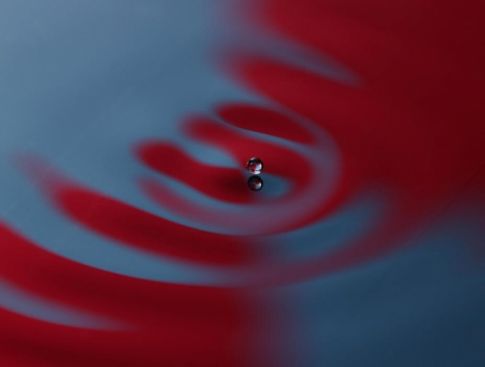 In a new article for the Annual Review of Fluid Mechanics, John Bush of MIT reviews experimental evidence showing fluid droplets exhibiting quantum-esque features. In particular, walking droplets are being touted as an analog system to investigate quantum pilot-wave theories -- realistic hidden variable theories in which quantum objects are guided by, as the name suggests, waves.
In a new article for the Annual Review of Fluid Mechanics, John Bush of MIT reviews experimental evidence showing fluid droplets exhibiting quantum-esque features. In particular, walking droplets are being touted as an analog system to investigate quantum pilot-wave theories -- realistic hidden variable theories in which quantum objects are guided by, as the name suggests, waves.
The experiment in question was set up by Yves Couder, Emmanuel Fort, and colleagues at the University of Paris Diderot. Writing for phys.org, Larry Hardesty writes:
"Couder and Fort's system consists of a bath of fluid vibrating at a rate just below the threshold at which waves would start to form on its surface. A droplet of the same fluid is released above the bath; where it strikes the surface, it causes waves to radiate outward. The droplet then begins moving across the bath, propelled by the very waves it creates."
There's more about Couder and Fort's experiment, with videos, in this phys.org story from October 2013.
Natalie Wolchover also provided an excellent account for QUANTA magazine in June 2014. In the article she describes how the how the Paris team used their set-up to demonstrate single and double slit interference, and also showed that the droplets can "tunnel" through barriers and orbit each other in stable "bound states".
Hardesty, for phys.org, quotes Bush: "The key question is whether a real quantum dynamics, of the general form suggested by de Broglie and the walking drops, might underlie quantum statistics," he says. "While undoubtedly complex, it would replace the philosophical vagaries of quantum mechanics with a concrete dynamical theory."
Thank you to John Merryman for suggesting that since the Why Quantum forum has now reached over 1000 posts, it would be a good idea to open a thread dedicated to this topic.
